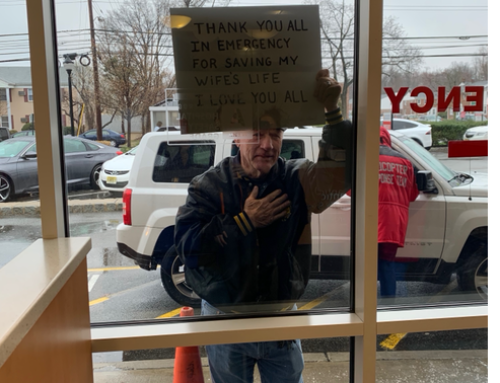6 WAYS YOU CAN PREVENT (OR CATCH!) Breast Cancer
Understanding your risk and being proactive about breast health can help lower your overall risk, or find breast cancer at an early) and more treatable) stage.
By Bridget K. Brisk, Montclair Breast Center

It’s common knowledge that smoking is the #1 cause of lung cancer and too much sun exposure will increase your odds of skin cancer, but did you know there are behaviors that increase your chance of breast cancer, as well? While some risk factors are unavoidable – your family history, ethnicity and age when periods started and stopped – there are things you can change.
1.- EAT REAL FOOD.
Women who are overweight (BMI over 25) after menopause have a 30-60% higher breast cancer risk than those who are lean. The simplest way to keep your waistline in check is to consume food as close to its original source as possible (think: fruit, vegetables, legumes and fish). Additionally, all those delicious antioxidants help prevent cancer cells from forming!
2.- MOVE YOUR BODY.
According to the large-scale, decades-long Women’s Health Initiative study, women who walked 30 minutes per day at least five days a week decreased their breast cancer risk by 20%.
3.- UPGRADE TO A 3D MAMMOGRAM.
Doctors are now able to find, and treat, Stage 0 breast cancer. Typically called DCIS, this early stage mutation is more easily found with top notch diagnostic tests, such as a 3D mammography. Treatment is typically a lumpectomy and radiation. Radiation therapy can reduce the risk of recurrence by about 60%.
4.- TAKE A GENETIC TEST.
Depending on your family or personal history, your breast doctor may recommend genetic testing. If you test positive for a genetic mutation, your risk increases significantly: 40-85% over the course of your life. Fortunately, there are medications (such as tamoxifen) that effectively treat and prevent some types of breast cancer.
5.- KNOW YOUR BREAST DENSITY.
Around 40% of women age 40+ have dense breasts. Breast density is not determined by how a breast looks or feels, but instead through a mammogram. Both dense breasts and cancer tumors appear white on a mammogram – akin to “looking for a polar bear in a snowstorm.” Fat, on the other hand, appears black on a mammogram – creating a greater contrast against white tumors.
Density classification is usually included in your mammogram report, but if not, ask your doctor. The information could warrant a n additional screening test, such as an ultrasound or MRI, and ultimately could save your life.
6.- FIND A SPECIALIZED BREAST RADIOLOGIST.
Women routinely see a dentist and gynecologist, but many don’t have a trusted physician dedicated solely to breasts. We recommend women see a breast doctor instead of a general radiologist. A breast doctor will help determine your personal risk, suggest prevention strategies and recommend appropriate breast monitoring so that any changes can be identified early and handled immediately.
Deciding who will read your mammogram is important, as early detection usually means avoiding chemotherapy.






Leave A Comment